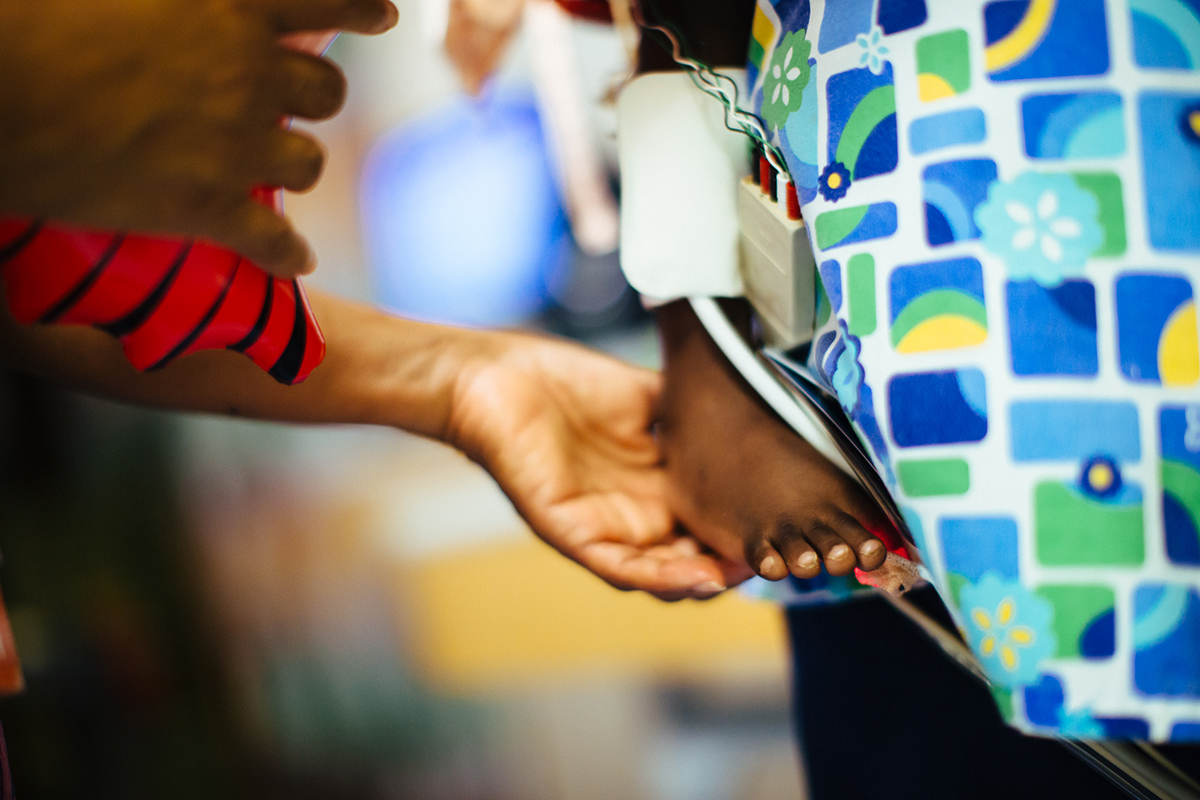Treatment
Pediatric Dialysis
What is dialysis?
Dialysis is a procedure that is performed routinely on people who suffer from acute or chronic renal failure. The process involves removing waste substances and fluid from the blood that are normally eliminated by the kidneys. Dialysis may also be used for individuals who have been exposed to or ingested toxic substances to prevent renal failure from occurring. There are two types of dialysis that may be performed on your child: peritoneal or hemodialysis:
What is peritoneal dialysis?
Peritoneal dialysis is performed by surgically placing a special, soft, hollow tube into your child's lower abdomen near the navel. After the tube is placed, a special solution called dialysate is instilled into the peritoneal cavity. The peritoneal cavity is the space in the abdomen that houses the organs and is lined by two special membrane layers called the peritoneum. The dialysate is left in the abdomen for a designated period of time that will be determined by your child's doctor. The dialysate fluid absorbs the waste products and toxins through the peritoneum. The fluid is then drained from the abdomen, measured, and discarded. There are two different types of peritoneal dialysis: continuous ambulatory peritoneal dialysis (CAPD) and continuous cyclic peritoneal dialysis (CCPD):
- CAPD does not require a machine. Exchanges, often referred to as passes, can be done three to five times a day, during waking hours.
- CCPD requires the use of a special dialysis machine that can be used in the home. This type of dialysis is done automatically, even while your child is asleep.
What is hemodialysis?
Hemodialysis is performed in a dialysis center or hospital by trained healthcare professionals. A special type of access, called an arteriovenous (AV) fistula, is placed surgically, usually, in your child's arm. This involves joining an artery and a vein together. An external, central, intravenous (IV) catheter may also be inserted, but is less common for long-term dialysis. After access has been established, your child will be connected to a large hemodialysis machine that drains your child's blood, bathes it in a special dialysate solution that removes waste substances and fluid, then returns it to your child's bloodstream. Hemodialysis is usually performed several times a week and lasts for four to five hours. Because of the length of time hemodialysis takes, it may be helpful to bring games or reading materials for your child to occupy him or her during this procedure.

Dialysis at Children's National Hospital
Children’s National has the only dialysis facility in the Washington, D.C., region dedicated exclusively for infants, children and teens. Discover more about the treatments we offer.

Providers of Dialysis (Peritoneal Dialysis and Hemodialysis)
 Aasha's Rare Gift Will Help Other Babies Grow up Healthy
Aasha's Rare Gift Will Help Other Babies Grow up HealthyTesting the descrption field
Departments that Offer Dialysis (Peritoneal Dialysis and Hemodialysis)

Kidney Transplantation
The Kidney Transplantation Program is the only one of its kind in the Washington, D.C., area focused on the needs of children and teens with kidney disease. Additionally, it is the region's only Medicare-approved center for kidney transplants in children and teens.








